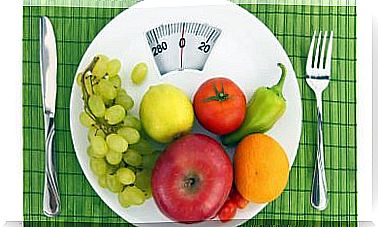Diabetes: How To Know Your Glycemic Index?
Living a healthy lifestyle and following all doctor’s instructions is essential for controlling diabetes. And if in doubt, it is best to consult a professional.

There is no one single diet that is right for everyone with diabetes. However, controlling the carbohydrates consumed is essential for keep blood sugar within desired limits . For this, it is necessary to know in depth the different types of food, their glycemic index and to be able to choose the most appropriate according to the state of your blood sugar at each moment.
In addition, it is necessary to keep in mind that not all carbohydrates raise blood sugar in the same way. It depends on their glycemic index. Those with a high glycemic index raise blood sugar faster than those with medium or low blood sugar. It is the latter that are recommended for people with diabetes. Also, in the case of consuming carbohydrates with a high glycemic index, you can combine them with others with a low glycemic index.
The glycemic index is very important

To plan your diet properly and choose the most appropriate ingredients, it is necessary to know the type and amount of carbohydrates contained in each food group.
Vegetables are divided into those that contain starch and those that do not. For example, potatoes, corn and peas are part of the group that provide the most carbohydrates and should therefore be consumed in moderation. In contrast, non-starchy vegetables such as chard, cauliflower, tomato and carrot contain very few carbohydrates and have a low glycemic index. In addition, they provide many vitamins, minerals and fiber. They therefore become great allies in the diet of diabetics.
Fruits contain carbohydrates, but most of them have a low glycemic index. Experts recommend incorporating them into the diet because of the nutrients they provide. Raspberries, strawberries and blackberries are low in carbohydrates and provide antioxidants and vitamins. If you opt for dried fruits, it is necessary to pay more attention to the portions. With just 2 tablespoons of raisins, it is possible to incorporate up to 15 grams of carbohydrates.
Cereals (wheat, rice, oats) and their derivatives such as flour are one of the main sources of carbohydrates. It is therefore very important to limit the quantities consumed and to pay attention to their degree of refinement. As a general rule, specialists recommend choosing whole grains and flours that provide many more nutrients and have a lower glycemic index. If you want to control your blood sugar, processed products made from refined flour are not desirable. This is because they often contain large amounts of added sugar.
Tips for controlling diabetes
To manage your diabetes, it is necessary that you control your diet. Here are some tips to help you do that:
- Plan a weekly menu and calculate the carbohydrate portions of each dish
- Make a shopping list with healthy ingredients and try to buy them ahead of time to have them available
- If you are still hungry when you have finished eating, you can eat a non-starchy vegetable salad with a light dressing. You will feel fuller by incorporating very little carbohydrate
- Choose whole products rather than refined products
- Look to replace high glycemic index ingredients with lower index ones. There are good substitutes. For example, you can replace a potato garnish with a sweet potato with a lower glycemic index.
- Check your blood sugar before each meal to choose the most appropriate foods according to your condition. Although you can use the traditional meter, new technologies are making this task easier. One of them is the continuous glucose monitor which collects data on the sugar level via a sensor implanted in the arm and sends them directly to the patient’s mobile.









